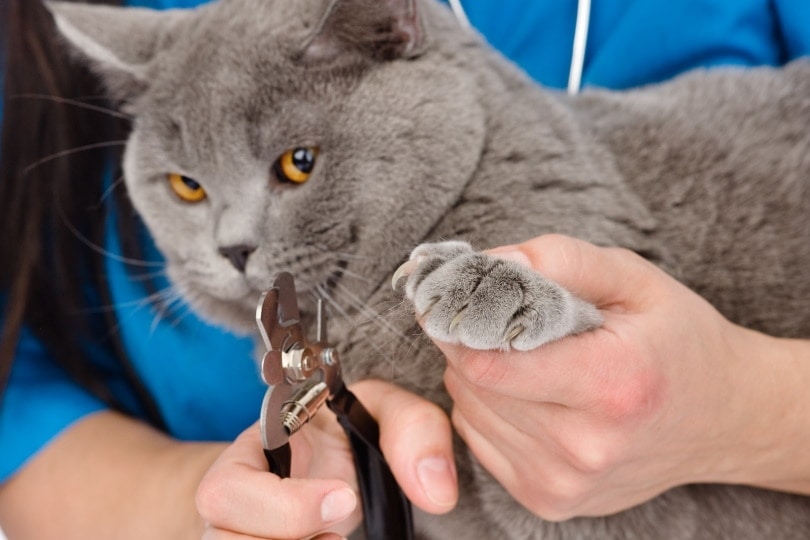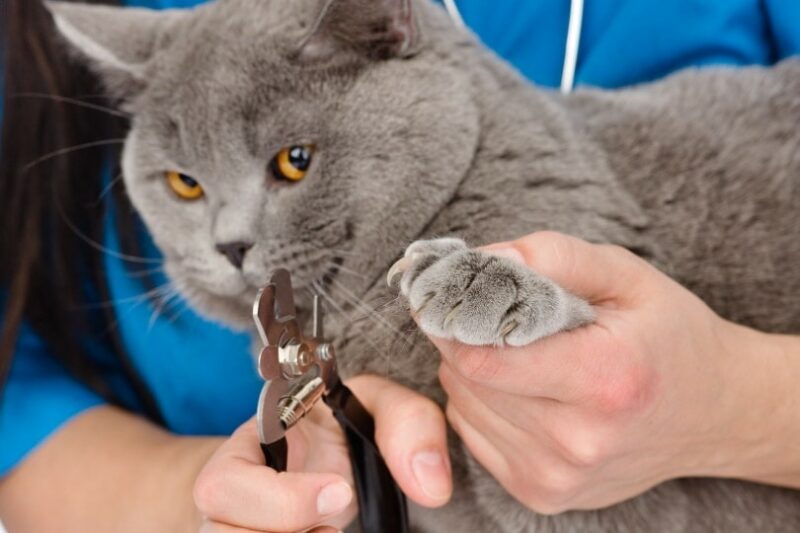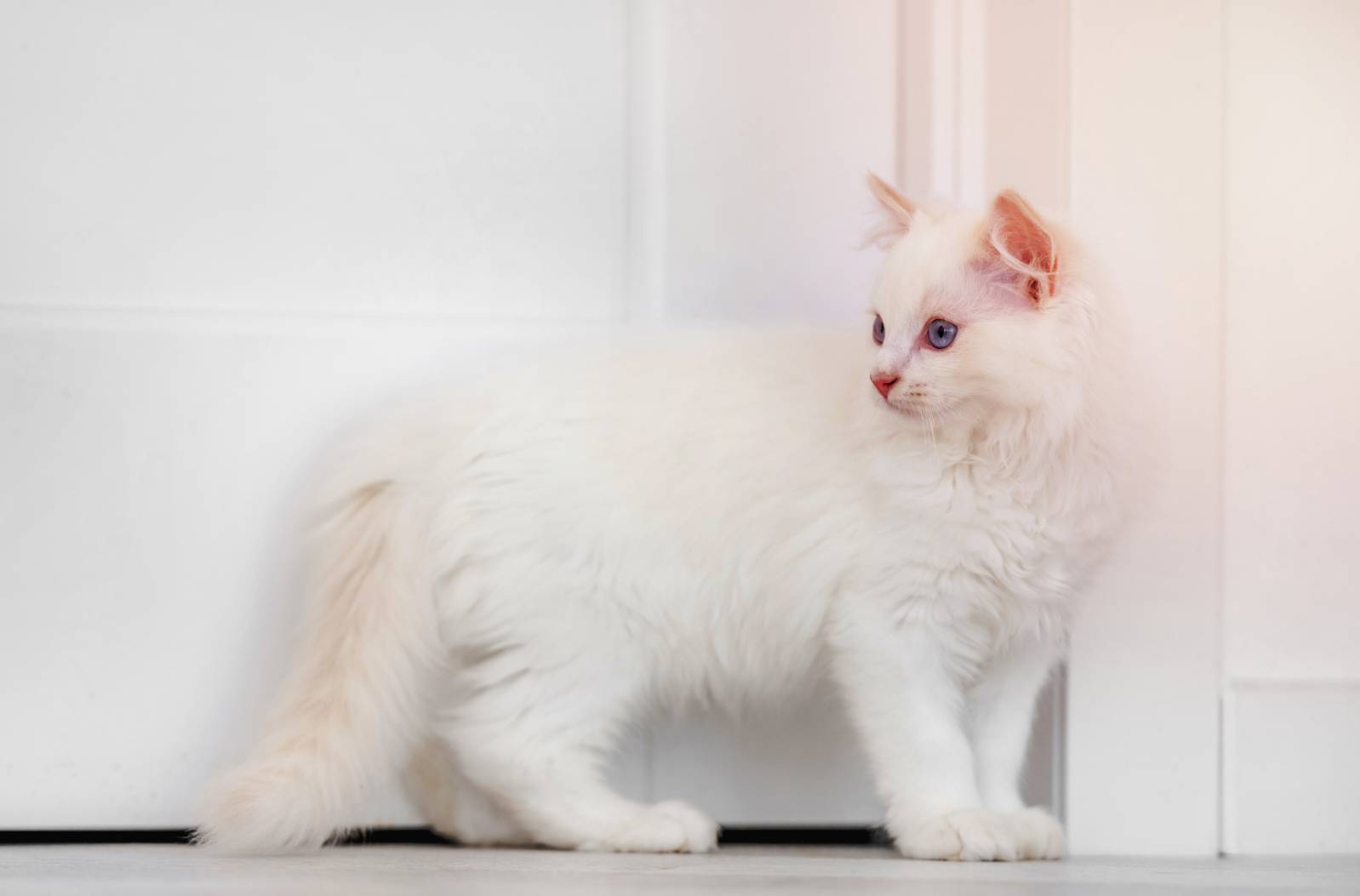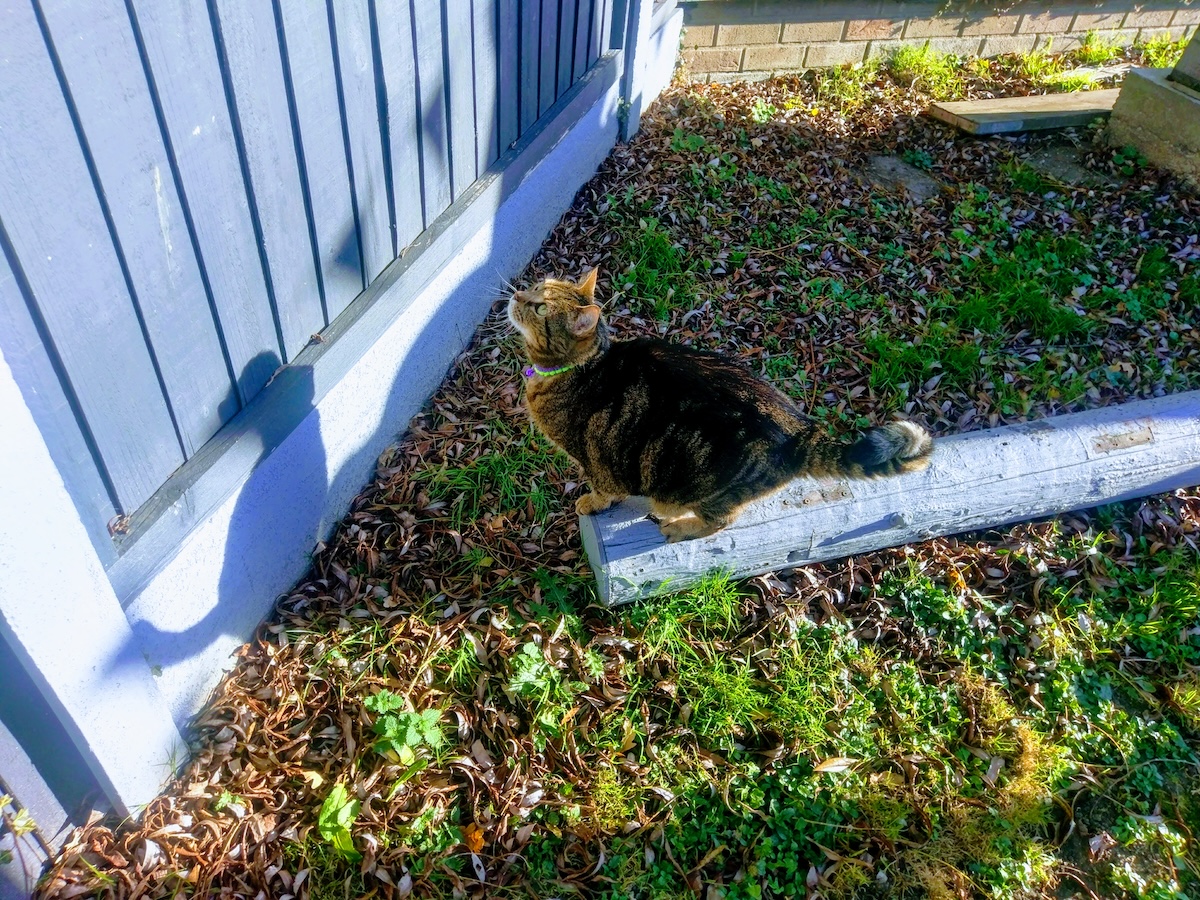If you ask Mojo, the cat, about his favorite pastimes, nail trims would definitely NOT be on the list. Sleeping and eating are favorite pastimes, but nail trims are not. Mojo is a tough-looking former stray who now holds court at the office of Spirit Essences*. He was rescued by none other than Jackson Galaxy, the cat behaviorist who co-founded the line of flower essences with Jean Hofve DVM.
Mojo loves people and spends his days going from office to office, ensuring everyone stays on task. He’s adjusted quite well to being spoiled and is a big softie most of the time, except on nail trim day. Some cats have had a bad experience in the past, while others just resist any sort of restraint. Some growl and others try to bite. Mojo does both. So, how do you trim an angry cat’s claws? Keep reading to find out more.
How to Approach the Difficult Cat’s Nail Trim
Whether I’m working with Mojo or any other cat who doesn’t like nail trims, preparation is key. Here are some things to remember:
- Cats have an amazing ability to pick up our energy. If you’re nervous or anxious, your cat will know. Remember to take a deep breath and try to stay calm.
- Keep everything as positive as possible. What does your cat like? Maybe it’s a favorite toy, food, or treat. Make sure they’re available and ready before you get started.
- Get all of your supplies ready. Gather your nail clippers, styptic powder (in case you need it), a towel or blanket, and calming products (see below).
- Dress for success. Be sure to protect yourself with long-sleeved shirts and long pants, preferably jeans. If you’ve been around unfamiliar animals, change into clean clothes, so you’re not bringing a scent that may upset your cat.
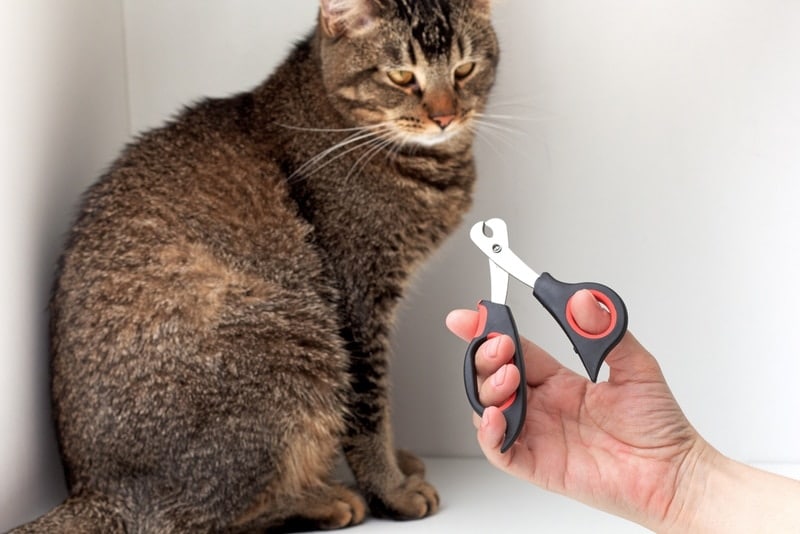
Setting the Stage
By using your environment to your advantage, you can keep stress to a minimum for you and your cat.
- Minimize distractions. The last thing you want is your phone ringing just as you’re getting started. Be sure to silence your phone, ask people to speak quietly, and turn off loud music. Are you expecting anyone to ring the doorbell or turn on the lawnmower? Avoid any surprises!
- Play music designed for cats. Just as music can calm our nerves, it has also been shown to help ease anxiety in cats. Consider playing some soft music to help relax everyone and cancel out exterior noise. There are even options for calming music designed specifically for cats*!
- Get the treats ready. If possible, have someone else distract your cat with their favorite treats, food, or a shiny toy.
- Location is key. For most cats, it’s best to do the trimming in the room they’re most at ease. Make sure you have enough light, and then sit wherever you’re most comfortable, whether cross-legged on the floor (my preferred technique) or on a sofa or chair. A blanket or towel can be used to “swaddle” the cat, and you can lean forward and use the gentle pressure of your body to keep them still. For cats who don’t respond well to being on the floor, placing them high up on a countertop or table can distract them enough to get the trimming completed.
Tools to Ease Stress
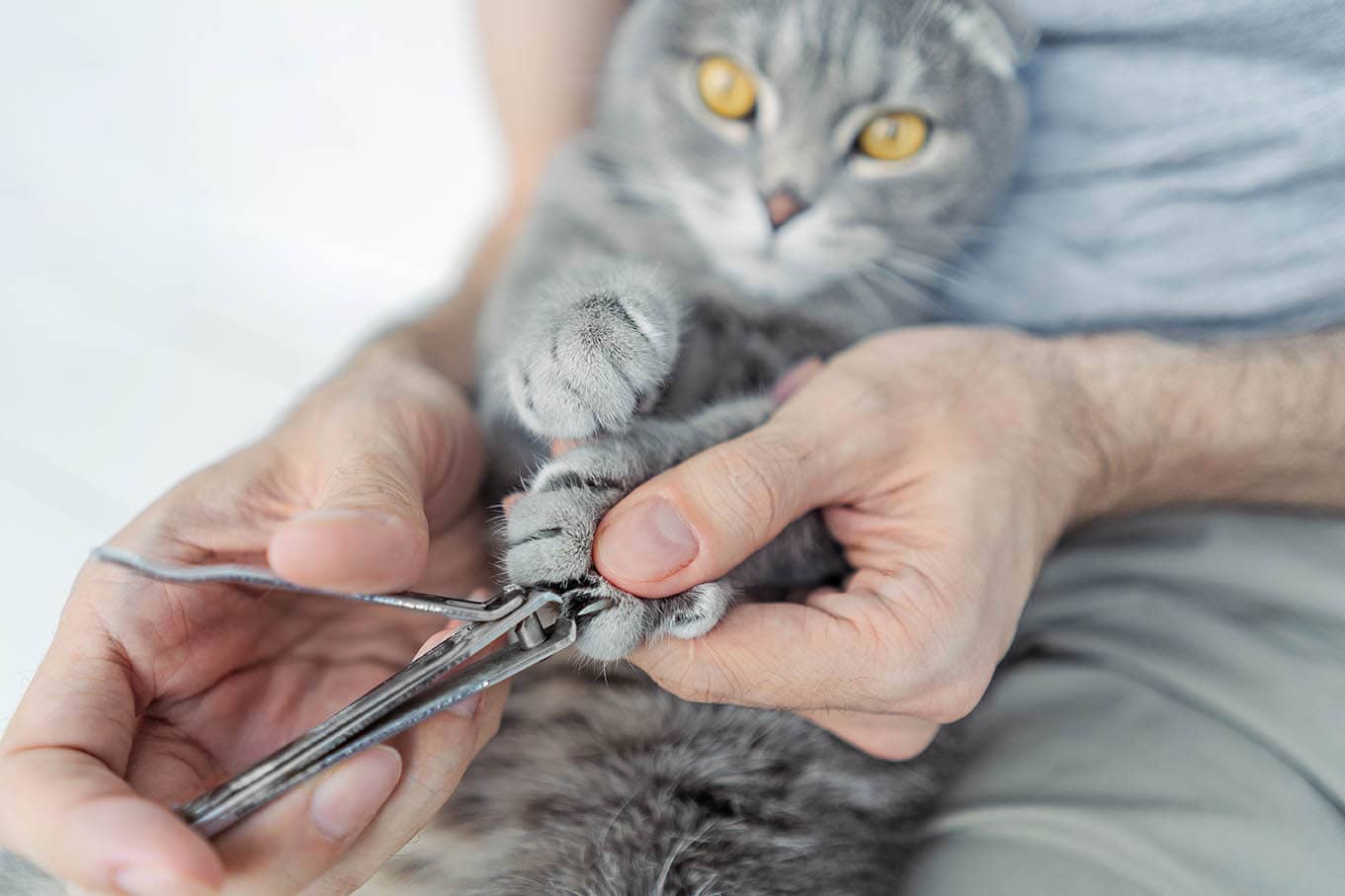
Minimizing stress is the goal of every nail trim. By using one or more of the following, you can ease your cat’s anxiety:
- Flower power is real. Flower essences can have a dramatic calming effect. While Bach’s Rescue Remedy* is a commonly used combination essence, there are many other options. Mojo responds well to Stress Stopper by Spirit Essences. It’s applied topically several times before his nail trim, either directly to his fur or sprayed onto a brush.
- Clothing is optional (for cats). Most people have heard of a ThunderShirt to ease anxiety in dogs, but it’s also an excellent product for some cats. The ThunderShirt* applies pressure to help calm your cat. This technique works wonders for Mojo. You can even spray the ThunderShirt with a calming spray like “Stress Stopper” to get an added benefit!
- Massage the scruff. While this doesn’t work for all cats, its effect can be dramatic. Try massaging the skin over your cat’s neck to find out if this technique relaxes them. You’ll know within a few seconds. If they relax, continue the massage. Then get the nail clippers ready and try one nail. Go back to the massage and repeat. If possible, a friend can take over the massage duty while you trim the nails.
- Some like it hot. Just like a warm bath can relax us, a warm towel can work wonders for a stressed cat. Try swaddling your cat in a towel that’s fresh out of the dryer.
- Calming treats* may help. There are numerous treats available that can ease anxiety in cats. It can be challenging to find one that is palatable and works, so it’s best to test them in advance of the nail trimming. Another option is a topical cream like Bach’s Rescue Cream. It contains a combination of five flower essences that help ease stress. Apply a small amount of cream to the inside of both ear flaps (where there isn’t fur) about an hour before the trim. Repeat about 15 minutes before the trim.
- A tired cat is a good cat! If your cat enjoys interactive toys like Da Bird* (my favorite!), get them tired before the nail trimming. A 10 to 15-minute session should do the trick!
Since all cats are unique, you’ll have to experiment to see what works best. Mojo responds well to flower essences, a ThunderShirt, and lots of treats. Remember that even if you only get one or two nails at a time, that’s okay! Laura Cochrane, aka “Dr. Kind Klaws,” is the owner of Roar, a Portland, OR-based business specializing in cat wellness and enrichment products.
Featured Image Credit: Ermolaev Alexander, Shutterstock

